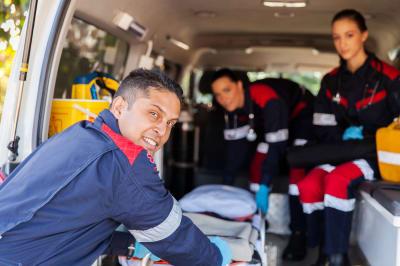If you aim to become a radiologic technologist, the main path you have to take includes attending a program on radiography. Like every other occupation, you require an innate or learned set of skills to become something in the world. In the case of a radiographer, you must attain a bachelor’s degree or an associate’s degree that will help you gain eligibility and a certificate to officialize you as a radiologic technologist.
This article will help you understand the route to becoming a radiographer, the three educational opportunities you can embark on, and which suits you the most.
Educational options and programs for Radiologic Technologists
Becoming a radiology technologist includes three options in the educational category that need to be fulfilled. These include a bachelor’s degree, a diploma or certificate, and an associate degree. Each option requires a certain amount of time and training but with variations. When choosing which of the three, you need to remember your career goals, finances, and how soon you want to begin working in that specific field.
Certificate or Diploma for Radiologic Technologists
If you choose to get a certificate or diploma through a program, you can qualify as a creator of radiological images—either X-rays or MRIs. You must choose between the two, as you cannot pick both procedures to focus on and specialize in.
Essentials
You must have a high school diploma or a GED certificate to get a diploma or certificate. Failure to have these ready will not allow you to attend any program and earn your diploma certificate.
Completing this coursework will weigh upon the type of image procedure you aim for, so you can look forward to learning courses such as:
- Physiology
- Radiation protection
- Anatomy
- Medical terminology
- Radiographic procedures
Time taken to complete course: 6–16 months
Clinical Work
Primary training on the operation of the radiologic equipment and how to position patients. The movement can occur within a lab or under an externship in a medical setting.
The degree is most suitable for people who desire to begin work in the radiological technology field as soon as possible.
Associate Degree
In terms of an associate degree, radiologic technology can bring you closer to the minimum fulfillment of the requirements to become an X-ray technician. It is the minimum education you can choose to work as a radiology technologist, otherwise known as a radiographer or radiologic technologist. Another reason for getting an associate’s degree is that you can obtain a Registered Radiologic Technologist R.T.(R) certification upon getting the degree.
Essentials
To get an associate’s degree, you must provide a high school diploma or a certificate of GED. In some cases, some programs make taking part in science or math subjects mandatory for students. The more exclusivity in the program, the higher the probability of having to list down requirements as per post-secondary education before admission.
In this coursework, you can expect the following:
- Physiology
- Medical ethics and privacy
- How to position patients
- Radiation protection
- Anatomy
- Medical terminology
Time taken to complete the course: An average of two years.
Clinical Work
Externships should be completed within the second year of studies. During the externship, training is done in a medical setting, doing X-ray imaging with radiographers.
The degree is best suited for people who desire to obtain a degree quickly in a short period while attaining all the special certificates.
Bachelor’s Degree
A radiologic science degree at a bachelor’s level can allow the student to have training that has more depth and is more advanced. A bachelor’s degree will help students to have a hands-on training experience that they can pursue through various imaging procedures apart from X-rays. This includes mammography and CT imaging.
Essentials
A high school diploma or GED is required to be provided. Other than this, some programs can list the minimum required score on standardized tests or GPA. Students completing an associate degree under their belt can benefit by getting accepted into a better bachelor’s program with far more competition.
The standard curriculum for this coursework includes:
- Medical terminology
- Clinical research
- Decision making
- Medical ethics and privacy
- How to position patients
- Advanced imaging techniques
- Radiation protection
- Anatomy and physiology
It takes an average of about four years to complete.
Clinical Work:
An externship for approximately one year has to be completed, in which X-ray imaging is trained within a healthcare facility setting such as a hospital, clinic, etc.
The degree is most suitable for people who aim to advance beyond imaging and apply for positions in supervising or managing.
Difference Between Associate and Bachelor’s Degree
The American Registry of Radiologic Technologists (ARRT) found that a 4-year bachelor’s degree has a more in-depth curriculum that requires training in the clinical field, which enhances the employee’s experience and knowledge while boosting the person’s earning prospects and potential.
Bachelor’s programs provide students with more advanced technical training when compared to Associate’s degree programs. With the use of activity relating to MRI, ultrasound, mammography, CT, nuclear medicine, radiation therapy, and angiography, a person with a bachelor’s degree has a higher potential than someone with an associate degree. Furthermore, those seeking to enter the medical schooling scene and whose goal is to become radiologists need a bachelor’s degree in radiologic technology.
Requirements for Radiologic Technologist School
The requirements for a radiologic technology student to be accepted by the school’s admission committee are to provide legitimate secondary school documents, an application that’s completed, and a personal statement, along with a specific fee. The students must complete the whole curriculum, including particular prerequisite programs such as biology classes, a background check, a physical examination, or a test (for example, TOEFL can be given to non-native English speakers).




